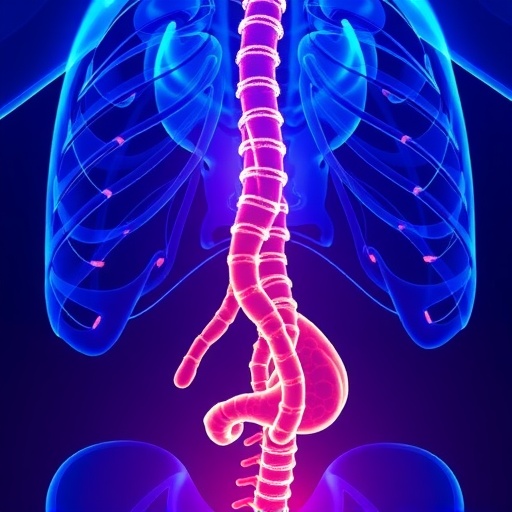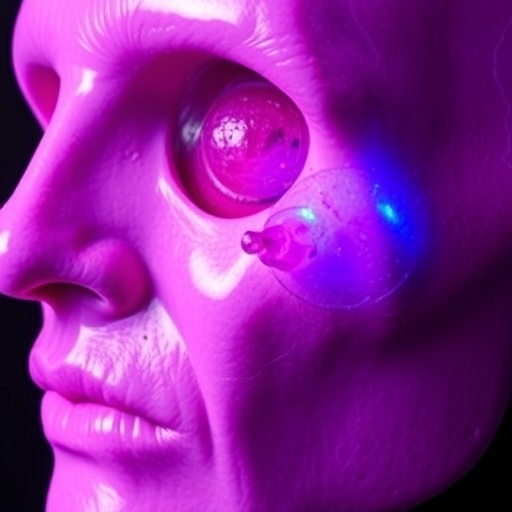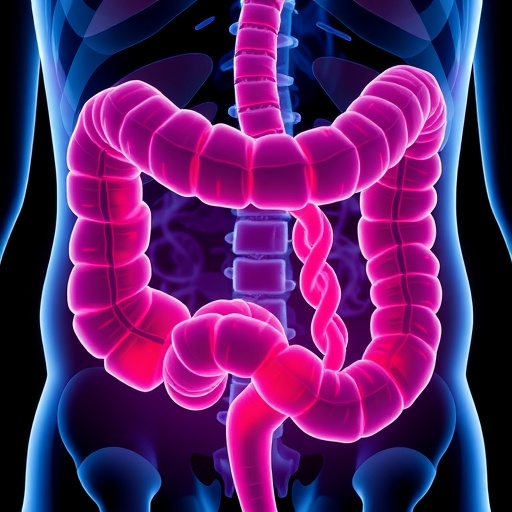In the evolving landscape of cancer therapeutics, tailored treatment options have become paramount, especially for malignancies with intricate molecular backgrounds. A groundbreaking study published in BMC Cancer in 2025 offers compelling insights into the molecular characteristics of upper tract urothelial carcinoma (UTUC), focusing on the biomarker profiles of Nectin-4 and TROP-2. This research delineates differences between UTUC patients with and without prior urinary bladder cancer (UBC), underscoring the implications for antibody-drug conjugate (ADC) therapies, an avant-garde class of targeted treatments.
Urothelial carcinoma, a malignancy arising from the urothelial lining of the urinary tract, frequently involves both the bladder and upper tract regions. Despite histopathological similarities, UTUC and UBC are increasingly recognized as distinct entities at the molecular level, which may explain variations in disease progression and therapeutic response. This study sought to dissect these molecular discrepancies with a specific emphasis on the expression of two proteins, Nectin-4 and TROP-2, which are emerging as crucial therapeutic targets for new ADC agents.
Antibody-drug conjugates represent a revolutionary therapeutic modality combining the selectivity of monoclonal antibodies with the potency of cytotoxic drugs. Enfortumab vedotin and sacituzumab govitecan are two ADCs recently approved for advanced urothelial carcinoma treatment, targeting Nectin-4 and TROP-2 respectively. These proteins, when expressed on tumor cells, allow these ADCs to deliver cytotoxic agents directly to cancerous tissues, minimizing damage to normal cells. Understanding their expression patterns in UTUC, particularly in patients with a history of bladder cancer, can guide optimized treatment planning.
The study encompassed 87 patients diagnosed with UTUC, divided between those with a positive history of UBC (54 patients) and those with UTUC alone (33 patients). Utilizing immunohistochemical analysis, researchers assessed the prevalence and intensity of Nectin-4 and TROP-2 protein expressions in tumor samples. The high-resolution staining quantified through H-scores enabled a nuanced understanding of biomarker distribution across these patient subsets.
Results revealed a striking ubiquity of TROP-2 expression, detected in 98.8% of tumor samples irrespective of prior bladder cancer history. This pervasive presence aligns with previous findings in urothelial carcinomas and reinforces TROP-2’s role as a dominant antigen for sacituzumab govitecan therapy. Notably, TROP-2 expression correlated significantly with lower-grade UTUC tumors, suggesting a possible link between TROP-2 levels and tumor differentiation status or aggressiveness.
Conversely, Nectin-4 demonstrated more heterogeneous expression. Although 70.1% of tumors expressed Nectin-4, its prevalence was markedly higher in UTUC patients with previous UBC (88.8%) compared to those with UTUC alone (63.6%). Despite this numerical discrepancy, the difference did not achieve statistical significance, hinting at underlying biological variability. However, the staining intensity of Nectin-4 was universally low, with modest H-score averages across both groups, indicating a generally weak protein expression relative to TROP-2.
These findings hold substantial relevance for clinical oncology. The abundant TROP-2 expression in UTUC suggests that sacituzumab govitecan might be efficacious across a broad spectrum of UTUC patients without necessitating prior biomarker testing. Similarly, although Nectin-4 expression is less consistent and intense, its presence in a majority of samples still supports the potential utility of enfortumab vedotin. Clinicians may consider these ADCs as frontline or adjunctive therapies for UTUC given their ability to exploit these molecular targets.
Importantly, the differential expression patterns between UTUC patients with and without bladder cancer history hint at divergent oncogenic pathways. Elevated Nectin-4 levels in patients with prior UBC suggest molecular crosstalk or shared carcinogenic processes that might influence treatment responsiveness or disease trajectory. This molecular heterogeneity calls for more sophisticated stratification in clinical trials to ensure tailored therapeutic interventions.
The relatively weak staining intensity of Nectin-4 in UTUC, regardless of bladder cancer history, invites speculation about tumor biology and microenvironmental influences. It is plausible that post-translational modifications, receptor internalization dynamics, or intracellular trafficking influence Nectin-4 presentation on the tumor cell surface, thereby impacting ADC targeting efficiency. Further molecular characterization at the proteomic and genomic levels is warranted to elucidate these mechanisms.
TROP-2’s robust expression across all UTUC samples, coupled with its association with lower tumor grades, might reflect a role in early tumorigenesis or disease maintenance. Its elevated expression could provide a therapeutic window wherein early intervention with sacituzumab govitecan limits progression or metastasis. Additionally, TROP-2’s involvement in cell adhesion and signaling pathways positions it as a multifunctional target, the inhibition of which may disrupt tumor proliferation networks.
The implications extend beyond therapeutic targeting. Biomarker expression profiles such as those of Nectin-4 and TROP-2 could serve as prognostic indicators or predictors of treatment outcome. Quantitative assessment through techniques like immunohistochemistry could be integrated into clinical workflows, optimizing patient selection for ADC therapy, ultimately enhancing personalized medicine in urothelial carcinoma care.
Moreover, this study exemplifies the critical need for further clinical trials focusing on UTUC subsets differentiated by bladder cancer history. Unraveling the molecular basis of these distinctions will be instrumental in developing next-generation ADCs or combination regimens with synergistic effects, potentially overcoming resistance mechanisms associated with heterogeneous protein expression.
While the study advances understanding, it also acknowledges limitations, notably the lack of statistical significance in some expression comparisons and the moderate sample size. Expanding cohort sizes and incorporating multi-omic analyses could solidify observed trends and reveal novel biomarkers. Prospective trials evaluating clinical responses to ADCs in biomarker-defined UTUC populations are necessary next steps.
This research marks a pivotal contribution to urothelial carcinoma oncology, bridging molecular biology with clinical therapeutics. By delineating biomarker landscapes relevant to ADCs, it paves the way for more effective, personalized treatment strategies harnessing the specificity of immunotherapy conjugates. The findings embody the broader movement toward precision oncology, where understanding tumor biology informs innovative interventions.
As therapeutic avenues like ADCs gain momentum, integrating molecular profiling into routine clinical assessment becomes imperative. The utility of Nectin-4 and TROP-2 as actionable targets in UTUC underscores this direction. Future studies might explore resistance patterns, combinatorial targeting, or novel ADC designs to further augment therapeutic efficacy.
In sum, the extensive evaluation of Nectin-4 and TROP-2 in UTUC uncovers critical molecular nuances informed by the presence or absence of prior bladder cancer. The data endorse the prospective application of ADCs targeting these proteins, with TROP-2 showing particularly high promise due to its pervasive expression and staining intensity. As clinical oncology continues to evolve, such biomarker-driven research underscores the potential for more intelligent, tailored interventions in urothelial carcinomas.
The study’s comprehensive presentation of molecular profiles enriches the scientific community’s understanding and sets the stage for next-generation therapeutic innovations. By decoding the molecular heterogeneity of UTUC, it invites a future where patients receive highly individualized treatments aligned with their tumor’s unique molecular signature, ultimately improving survival and quality of life.
Subject of Research: Molecular profiling of Nectin-4 and TROP-2 expression in upper tract urothelial carcinoma (UTUC) with and without a history of urinary bladder cancer to evaluate implications for antibody-drug conjugate therapies.
Article Title: Comparison of molecular profiles (Nectin-4 and TROP-2) in upper tract urothelial carcinoma with a positive history of urinary bladder cancer vs. UTUC only in the era of ADCs.
Article References:
Kanaan, M.R., Schmitz, J., Braesen, J.H. et al. Comparison of molecular profiles (Nectin-4 and TROP-2) in upper tract urothelial carcinoma with a positive history of urinary bladder cancer vs. UTUC only in the era of ADCs. BMC Cancer 25, 1525 (2025). https://doi.org/10.1186/s12885-025-15042-7
Image Credits: Scienmag.com
DOI: https://doi.org/10.1186/s12885-025-15042-7
Tags: advanced cancer therapeuticsantibody-drug conjugates for urothelial carcinomaBMC Cancer study on UTUCcytotoxic drugs and cancer therapydifferences between UTUC and UBCimpact of bladder cancer on UTUCimplications of molecular characteristics in cancermolecular profiles of upper tract urothelial carcinomamonoclonal antibodies in cancer treatmentNectin-4 biomarker in cancer therapytargeted treatment options for urothelial cancerTROP-2 as a therapeutic target





